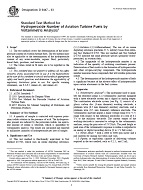1.1 This guide applies only to existing historic masonry construction. For purposes of this guide historic masonry is intended to refer to buildings that have significant historic, architectural, cultural or social meaning and are constructed of masonry materials. Similar techniques and evaluation should be employed for non-historic masonry, but are not addressed in this guide.
1.2 This guide outlines procedures for repointing historic masonry and is intended to provide guidelines for the user to establish project-specific requirements for repointing of historic masonry.
1.3 This guide only pertains to masonry units: brick, terra cotta, stone, cast stone, and concrete brick laid in mortar, and may or may not be appropriate for other masonry units.
1.4 This guide addresses repointing (tuckpointing) as defined in .
1.5 When considering repointing, especially on masonry of artistic, architectural, cultural, or historical significance, guidance from a specialist experienced in historic masonry and repointing should be sought.
1.6 This guide does not address pointing styles or profiles used on masonry or the methods of producing them.
1.7 Additional repairs that may impact the structural integrity of the masonry may necessitate that a structural stability analysis be completed prior to the execution of any work.
1.8 Following this guide may involve hazardous materials, operations, and equipment. This standard does not purport to address all of the safety concerns, if any, associated with its use. It is the responsibility of the user of this standard to establish appropriate safety and health practices and determine the applicability of regulatory requirements prior to use.
Product Details
- Published:
- 02/10/2003
- Number of Pages:
- 4
- File Size:
- 1 file , 38 KB


